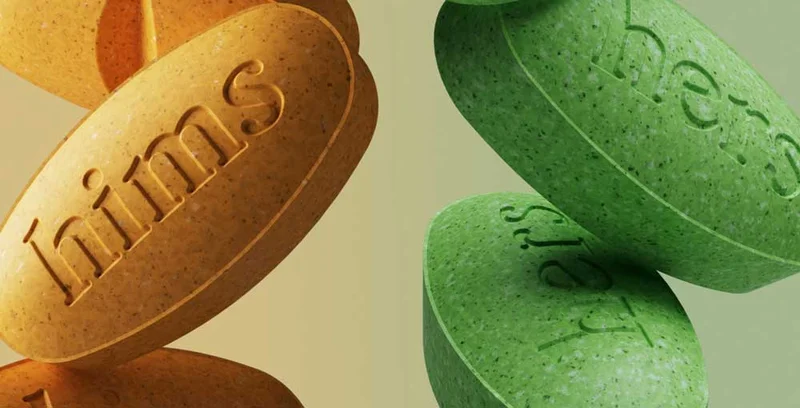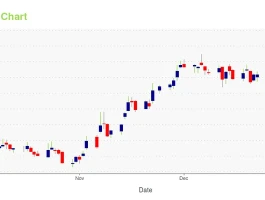The 9% Glitch in the Subscription Machine
A nine percent single-day drop is rarely about one person. On the surface, the market’s reaction to Hims & Hers Health (HIMS) announcing a change in its Chief Operating Officer looks like a textbook case of investor anxiety. The stock was punished with a more than 9% sell-off—to be more exact, 9.05%—on a day the S&P 500 was essentially flat. The departure of COO Nader Kabbani, even to a vaguely defined "advisory role," was the clear catalyst.
But to stop the analysis there is to miss the real story. This wasn't just a reaction to a line item in a regulatory filing. It was a violent repricing of a narrative. For years, Hims & Hers has sold investors on a story of sleek, predictable, subscription-based revenue. It’s a modern healthcare company built like a SaaS platform, a beautiful machine designed to generate recurring cash flow from everything from hair loss treatments to mental health consultations. Investors bought into this story so completely that they were willing to pay a staggering premium for it.
The COO change was the glitch. It was the first loud, unsettling noise from inside the machine that made everyone suddenly question the price they paid for supposed perfection. The market didn't just sell off because a man changed jobs; it sold off because a crack appeared in the very foundation of the company's valuation thesis: flawless, uninterrupted execution.
A Valuation Divorced from Reality
To understand the severity of that 9% drop, you have to look at the numbers Hims & Hers was posting before the news. This is not, by any conventional metric, a "value" stock. Its forward price-to-earnings (P/E) ratio sits at a dizzying 94.83. For context, a competitor in the medical information systems space, Omnicell (OMCL), has a forward P/E of 20.30. The discrepancy is stark across the board. Hims' price-to-book ratio is 22.76, while Omnicell's is 1.11 (a figure that suggests its market price is much closer to its actual net asset value).
This is why Zacks gives Hims & Hers a "D" for Value, a conclusion many analysts reach when asking OMCL or HIMS: Which Is the Better Value Stock Right Now? You don't buy a stock with a P/E near 100 because you think it's a bargain. You buy it because you believe in a narrative of explosive, near-perfect growth that will continue far into the future. It’s a price that tolerates no mistakes. The subscription model is the engine of this narrative, promising predictable revenue streams and high customer lifetime value. The company’s entire identity is built on being a stable, scalable platform.

Think of Hims & Hers' business model as a meticulously engineered machine designed to print recurring revenue. Customers sign up, their cards are billed on a recurring basis, and products are shipped. It’s clean, efficient, and highly scalable. This is the story that justifies the valuation, the same kind of story that has propelled stocks like `sofi stock` or even, in its early days, `tsla stock`. It’s a bet on the system, not just the product.
But the COO is the chief mechanic. They are responsible for the operations, the logistics, the very functioning of that machine. When the mechanic is suddenly reassigned to "advise on special global initiatives," you have to start questioning the integrity of the machine itself. Is this change a sign of a problem on the assembly line? A flaw in the design that requires a new expert? Or is it something else entirely?
And this is the part of the filing that I find genuinely opaque. Kabbani is shifting to an "advisory role" to "provide ongoing strategic guidance." I've seen this language countless times; it’s a corporate Rorschach test. To optimists, it’s a senior leader moving to a strategic perch. To skeptics, it’s a managed exit disguised in polite corporate-speak. The filing offers no concrete details on why this specific operational leader is needed for "special global initiatives" through next July. What are these initiatives, and why do they necessitate vacating the single most critical operational seat in a company whose entire value is predicated on operational excellence?
The incoming COO, Mike Chi, comes from a marketing and commercial background. He may be a perfectly capable executive, but his resume—heavy on marketing at Zola and Intermix—doesn't scream "logistical mastermind." This isn't a criticism of Chi, but an observation of the signal it sends. The market is being asked to trust that a marketing expert can seamlessly take the wheel of a complex healthcare logistics operation, an operation that underpins a nearly $12 billion market cap. The 9% drop suggests the market isn't willing to make that leap of faith without a discount.
A Price Tag for Certainty
Ultimately, the market's reaction was a simple calculation of risk. The premium baked into the `hims stock price` was a payment for certainty—the certainty of the subscription model, the certainty of smooth scaling, and the certainty of C-suite stability. The COO shuffle wiped out a significant portion of that certainty premium in a single trading session.
The underlying business hasn't changed. The subscription model is still intact. But the perception of its infallibility has been shattered. The stock is no longer being priced as a perfect growth machine, but as a high-growth company with now-visible operational risk. The question for investors is no longer just "how fast can this company grow?" It's now "how resilient is the operation that fuels that growth?" Until the company can provide a clear and convincing answer, that valuation will remain under intense scrutiny. The machine still runs, but everyone is listening for the next strange noise.

